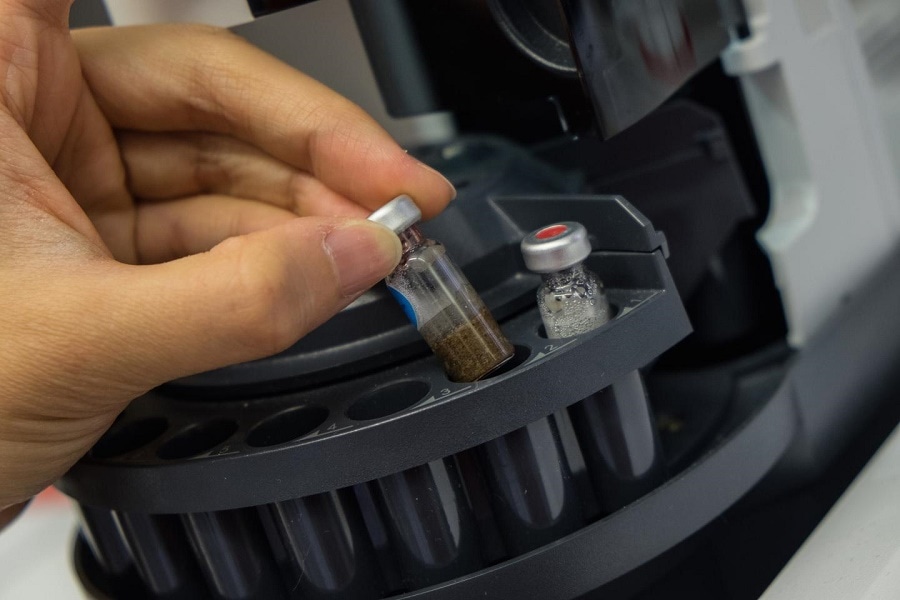Jul 19 2016
A team of researchers from Rice University have developed gas biosensors that have the ability to see inside soil and also enable tracking of microbial community behavior.
 Prepared soil samples used to test bioengineered tools that will allow researchers to study Earth’s microbes from micro- to macroscales. (Photo by Jeff Fitlow)
Prepared soil samples used to test bioengineered tools that will allow researchers to study Earth’s microbes from micro- to macroscales. (Photo by Jeff Fitlow)
The American Chemical Society’s journal Environmental Science and Technology published a study where the Rice team explained using genetically engineered bacteria that discharges methyl halide gases to control microbial gene expression in soil samples in the laboratory.
The bacteria is programmed with synthetic biology to release gas reports when they interchange DNA through horizontal gene transfer, the method in which organisms share genetic traits without a parent-to-child relationship. The researchers now use these biosensors to easily monitor these processes in real time without the need to see into or disrupt a lab soil sample.
The researchers at Rice hope their findings will help environmental scientists in the same way fluorescent reporter proteins serve for biochemists who monitor protein expression and other processes in biological systems.
The study conducted by the Rice labs of biochemist Jonathan Silberg, microbiologist George Bennett, biogeochemist Caroline Masiello, and lead author Hsiao-Ying (Shelly) and Rice graduate student Cheng, is the first product developed through a $1 million grant by the W.M. Keck Foundation to design microbial sensors that release gas.
This paper describes a new tool to study how microbes trade genetic material in the environment. We care about this because the process of horizontal gene transfer controls a lot of things that are important to humans either because they’re good - it’s how rhizobia trade the genes they need to fix nitrogen and support plant growth - or they’re bad - it’s how bacteria trade antibiotic resistance in soils. It’s been much more challenging in the past to construct models of this dynamic process in real soils and to study how horizontal gene exchange varies across soil types. We’ve created a new set of tools that makes that possible.
Caroline Masiello, Professor of Earth Science, Rice University
The researchers are hoping scientists will use gas biosensors in antibiotic exchange in wastewater treatment, the laboratory to analyze nitrogen fixing in agriculture, transferring gene for conditions where nutrients are limited and the relationship between the release of greenhouse gases and gene expression in soil.
“There are other technologies that will build on this,” said Silberg, an associate professor of biochemistry and cell biology. “The idea of using gases opens up most anything that’s genetically encoded. However, we do need to improve technologies for some of the subtler kinds of questions.”
He pointed out that discharging and sensing methyl halide gas represented an easy proof for this concept. “Now we want higher-resolution information about other types of biological events by creating more sophisticated genetic programs using synthetic biology,” Silberg said.
The team expects that soon they will be able to analyze agricultural soil samples to adjust crop growth with the help of enhanced filtering and watering use.
How can agriculture get this extra level of efficiency without the waste? Lots of people are coming to that, and there are lots of ways to do it. We’re trying to build high-tech tools that allow us to understand mechanisms to make reliable predictions. That’s the long game with these tools.
Jonathan Silberg, Biochemist, Rice University
The researchers highlighted that these are tools for soil studies within the environment of a laboratory. Once the results are obtained the synthetic microbes are destroyed.
The soil samples from the National Science Foundation’s Kellogg Biological Station Long-Term Ecological Research Site in Michigan was analyzed by the Rice lab after combining bacteria, known as Escherichia coli, programmed to release gas during transfer of their DNA to another microbe. Signals emitted by the gas reached up to 10,000 times the lab’s detection limit.
Unlike green fluorescent protein that requires oxygen to work, the gas sensors worked efficiently under oxygen-depleted or anoxic conditions. Bennett pointed out that reporter proteins are predicted to be used in various kinds of soil microbes, while some are currently being tested.
Not only the Keck Foundation, but the Taiwan Ministry of Education Scholarship and the Rice Faculty Initiative Fund also supported the study. Bennett is the E. Dell Butcher Professor of Cell Biology and Biochemistry.